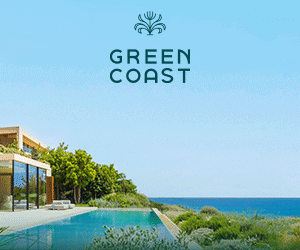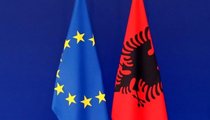Who built the "Lake Hills" in Tirana? 1951 project for the Capital Megapark
By Kreshnik KUÇAJ
In November 1951, Deputy Prime Minister Hysni Kapo signed an order that gave life to the establishment of a special commission that would to study the possibility in Tirana to build a large park with a total area of 700 hectares. After this order, the Commission led by engineer Gaqo Tashko gathered on the eve of the 39th anniversary of Independence to form 3 subcommissions: the Subcommission for the Cultural Park, the Subcommission for the Botanical and Natural Park and the Subcommission for the Zoological Park. The subcommittees would be headed by Soviet and Bulgarian architects, while they would have Albanian architects and engineers in their composition. But only in 1953 would it be reached in a concrete project that provided the details of how the Great Park of Tirana would be.
Characteristics for the creation of a Great Park in Tirana, 1953
The Commission for the Great Park of Tirana also received notice of the opinion presented by Soviet architects for the Great Park of Tirana, also related to the general development plan of the capital decided the following: 1- The Great Park of the City of Tirana should have a national character and serve for the rest and cultural development of the residents of the capital and the Republic, serve for artistic and scientific purposes 2- The Great Park should have an area of 700 hectares and be located in the hills behind the Palace of the General Command, bounded by the palace of the Ministry of People's Defense, from the stream of the Kopil Pass, from the top of the mountain of the town of Sauk and Selitë and on the hill of Darda. This area is in the immediate vicinity of the city and presents varied terrain, hills, broken valleys that open and expand in the plain of Tirana (behind the People's Assembly). The area extends to the tops of the Sauk County mountains and contains many vantage points from which one can see the entire capital city and far into the horizon. It is traversed by a road that goes from the Party school, through the Palace of Brigades and over the tops of the mountains until it descends in the plain of Tirana (Sauk). This is already a beautiful tourist route that almost goes around the entire county. 3- The Great Park consists of: - The Culture Park with an area of 150 hectares - The Botanical Park with an area of 25 hectares. - Zoological Park with an area of 25 hectares - Natural Park with an area of 500 hectares This park must be designed taking into account the development of the City of Tirana up to 200 thousand inhabitants and the development of the regulatory plan of the city.The designed project actually managed to get only the preliminary approval of the authorities, but the only thing that started to be built was the Artificial Lake and the massive planting of trees, often without a concrete plan since the plan was not approved as a final plan. The official data of the time prove that until 1953 about 250 thousand roots of non-fruit trees were planted. Their planting was only intended to provide shade for the population that moved there and was not done according to an architectural project. The documents of the time also show that in the first years for the realization of this park, the Ministry of Construction was slow and everything remained only within the framework of the project idea. In 1953, in the Great Park of Tirana there were only about 2 thousand meters of drinking water pipe, a buffet bar and an asphalt road leading to the Martyrs' Cemetery. The project's first idea envisaged the planting of about 130 thousand more saplings, the construction of a beach by the lake, the construction of 4 public taps, 6 sculptures, a kiosk for books, newspapers and magazines, the construction of a road for cars and a road for pedestrians, a sideboard and stone benches. The total budget to implement this idea was calculated at 9.3 million ALL.
The 1955 project for the Great Park of Tirana
In 1955, the commission for the construction of the Great Park of Tirana would meet again under the direction of the engineer Gaqo Tashko and whose composition included well-known architects and urban planners of the time such as Gani Strazimiri, Kol Paparisto, Ibrahim Sina, etc., to approved the project-idea of the regulation plan of the Great Park of Tirana. The project idea contained two variants, with few differences from each other. But what stands out in both variants was the limitation of the projected area of the Great Park. From the 700 hectares that were planned at the beginning, in the 1955 plan the area was reduced to 250 hectares. The first variant envisaged that the Great Park would consist of the Culture Park with an area of 110 hectares, the Natural Park with an area of 90 hectares, the Zoological Park with an area of 25 hectares and the Botanical Park with an area of 25 hectares. The Culture Park occupied the central part of the park and was close to important buildings such as the Institute of Sciences, the Stadium and its complex. Taking into account the nature and climate of our country, it was envisaged to be a well-greened park, with light constructions in the form of pavilions which were connected to each other by roads that mainly followed the natural terrain. The objects required according to the program were the summer theater, exhibition, panorama, cafe, restaurants, etc. located in visible points, easily accessible by visitors. This variant provided that the "Martyrs' Cemetery" would either remain where it was or be moved to the hill near Elbasan Street. For the creation of better micro-climatic conditions as well as for a more attractive rest in both wings of the park, a basin and a large lake were foreseen. The artificial lake project, according to the 1955 report, would be based on the study of engineer Faredin Nuri. The territory occupied by the park does not foresee any significant demolition except for some private constructions that were assessed as not playing any role. While Variant 2 resembled Variant 1 for the most part, it also envisioned a smaller zoo and a larger lake. Referring to the 1955 project, the total area of the park would be 250 hectares. The reason why the two variants proposed the reduction of the park's surface was that not only was it created a great distance from the city, but also because the previous variant affected the land to a large extent that was used by farmers for the production of bread and food. With the 1955 project, it was calculated that the park would enable a surface of 16.5 square meters per inhabitant; an estimate that was based on a resident population in the capital of 150,000. The largest area, in both projects of 1955, was occupied by the Great Park of Culture, with 160 hectares. The entire Great Park of Tirana was estimated to have a cost of 260 million lek, where the largest part was occupied by the cultural space and the systematization and expansion of the Artificial Lake. The Cultural Park was estimated to cost 185.5 million ALL while the Artificial Lake 50 million ALL. The Zoo was estimated to cost 22 million ALL while the Botanical Park 17 million ALL. The Natural Park was valued at 26 million ALL, where the largest part of the budget was the construction of roads. Meanwhile, the tank and the water supply together with the lighting were estimated to cost 15 million ALL.
The 1965 project for the Artificial Lake of Tirana
The realization of the project would be delayed and would be brought back for discussion in 1965 when a special project for the further expansion of the Artificial Lake would be drawn up. This meant the need to build a new dam and flood the previous dam as a result of the rising water level. Referring to the new project, the dam of the Artificial Lake of Tirana, part of the Great Park, would increase from 116.5 meters to 117.3 meters. As a result, the previous dam would collapse. Meanwhile, it was foreseen that on the one hand the Artificial Lake would be supplied by the Erzen River and on the other hand, it would serve to supply the Textile Factory in the capital, through two pipelines. After the design of the project, the corresponding constructions started, where bathing in the lake was prohibited by law during the works.
Tree planting campaigns
All institutions of the country were mobilized to plant trees in Tirana's park. For each institution, a separate plot was assigned to be planted with trees. The State University was assigned the planting of 24,000 saplings, the "21 December" Enterprise 19,000 saplings, or the Tirana Garrison, which was assigned 14,000 saplings. The largest number of seedlings to be planted was assigned to the Polytechnic on November 7, with 28,000 seedlings. During the period of its creation, the park was planted mainly with acacia, Canadian poplar, wild and temperate pine, oak, ash, eucalyptus, etc. and a greenhouse of shrub varieties. The Great Park of Tirana, which was also known as Lake Hills in Tirana, quickly became a massively frequented place. But the documents of the time prove that while it was significantly advanced with the planting of trees, with the infrastructure to host people, there were delays... The calculations for the number of the population in Tirana turned out to be wrong as the city would grow demographically, more than predicted in the perspective of development...
Çarçani project, the 'last communist project' for the lake of Tirana, 1990
In 1989, the government headed by Adil Çarcani approved the new regulation plan of Tirana, including several projects that actually found implementation in the post-communist period. A year later, in 1990, after the Plan of Tirana, the plan for the Great Park of the capital was also discussed. The park had reached an area of 256 hectares and was one of the most frequented centers of the capital for walking, entertainment and rest. The presence of the botanical garden and the zoo meant that this park had scientific values and not only tourist values. The park in those years had 20 kilometers of roads and a social-cultural element. But the work done, the territory of the park was partially systematized and built. The authorities themselves admit that the shortcomings in the implementation of the regulation plan of the Great Park had caused its surface of 15-20 hectares to maintain a large flow of attendance with about 1 thousand to 1500 people per hectare. In this state, the park did not fully perform the functions for which it was created, therefore its construction and further expansion was necessary in support of a restudy, reflecting contemporary requirements. The 1990 project envisaged the expansion of investments in the park in the Sauk area as well as the expansion of the promenade to the area where the New Outer Ring of Tirana was expected to be built in the future, which was foreseen in the new regulatory plan of the city. Also, the project envisaged the construction in the Artificial Lake, of two islands within it. According to this plan, the park would be divided into two areas; in the area of organized active rest and in the area of free rest. So, it was envisaged to build suitable facilities for training and sports activities and the rest for rest and reading. In the park, it was planned to build social and cultural facilities such as 1 or 2 tourist hotels and restaurants with a capacity of 50-60 beds, 2-3 buffet-restaurants and mass pastry shops with a capacity of 200-300 seats each, 1 new summer cinema with 1000 seats. , outdoor reading areas, beach and lakeside boat docks, outdoor swimming pools, various playgrounds scattered throughout the park. Also, this plan provided for the establishment of pioneer camps and 1 or 2 vacation homes for the 15 days of vacation that the employees received. Also, a special enterprise was created for the management of the park. But the unrest that followed the country in the following year would mean that a good part of this project would not be implemented immediately, just as the Great Park would also be damaged by illegal construction and deforestation. In recent years, investments have been made in the Great Park of Tirana and it is one of the most frequented places in the capital.
*The show 'DOSJA E' on SCAN TV





















